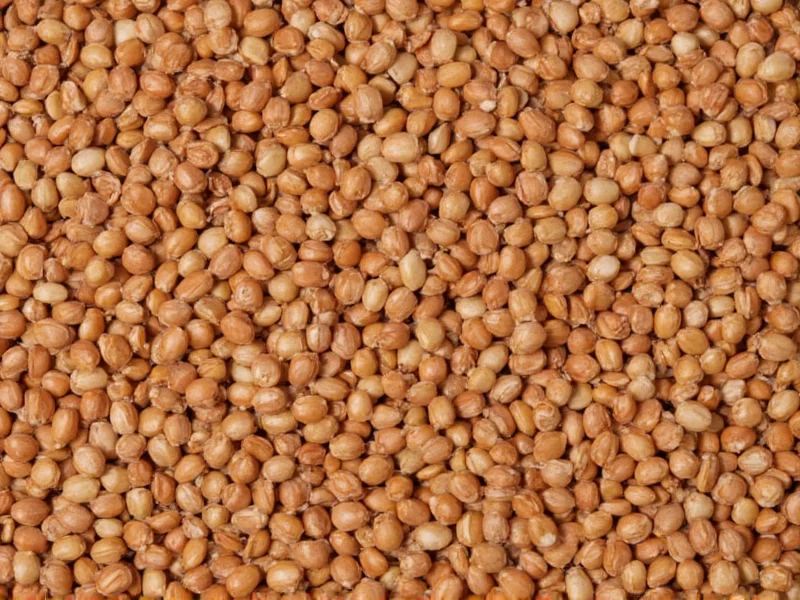One cup (198g) of cooked lentils contains approximately 230 calories, with raw lentils providing about 353 calories per 100g. The calorie content varies slightly by lentil type, but all varieties offer exceptional nutritional value with high protein and fiber content relative to their caloric density.
Lentils represent one of nature's most efficient nutritional packages, delivering substantial health benefits while maintaining a moderate calorie profile. Understanding the precise lentil calorie content helps individuals make informed dietary choices whether they're managing weight, building muscle, or simply maintaining a balanced diet. This comprehensive guide examines the caloric composition of various lentil types, their nutritional context, and practical applications for different dietary goals.
Nutritional Breakdown of Lentils
Lentils provide an impressive nutritional profile that extends far beyond their calorie count. A standard one-cup serving of cooked lentils (approximately 198g) delivers:
| Nutrient | Amount per Cup (Cooked) | % Daily Value |
|---|---|---|
| Calories | 230 | 12% |
| Protein | 18g | 36% |
| Dietary Fiber | 15.6g | 56% |
| Carbohydrates | 40g | 13% |
| Fat | 0.8g | 1% |
| Folate | 358mcg | 90% |
This remarkable nutritional density makes lentils an excellent choice for plant-based diets, weight management programs, and overall health maintenance. The high fiber and protein content creates significant satiety, helping control appetite despite the moderate calorie count. Unlike many high-calorie foods, lentils provide sustained energy release due to their complex carbohydrate structure and low glycemic index of approximately 32.
Calorie Variations Across Lentil Types
While all lentils share similar nutritional profiles, subtle differences exist between varieties. Understanding these distinctions helps optimize dietary planning based on specific nutritional goals and lentil calorie content considerations.
| Lentil Type | Calories per 100g (Cooked) | Protein per 100g | Fiber per 100g |
|---|---|---|---|
| Green/Brown Lentils | 116 | 9g | 8g |
| Red/Yellow Lentils | 114 | 9g | 7.9g |
| Black (Beluga) Lentils | 117 | 9.1g | 8.2g |
| French (Puy) Lentils | 115 | 8.8g | 7.8g |
These minor variations become particularly relevant when tracking precise nutritional intake. For example, black lentils contain marginally more fiber, making them slightly more beneficial for digestive health and blood sugar management. Red lentils, while nearly identical in calorie content, break down more completely during cooking, making them ideal for soups and purees where texture matters less than nutritional value.
Raw vs. Cooked Lentil Calorie Content
A common point of confusion involves the significant difference between raw and cooked lentil calorie content. Raw lentils contain approximately 353 calories per 100g, while cooked lentils contain only about 116 calories per 100g. This dramatic difference stems from water absorption during cooking—lentils typically triple in volume and weight when prepared.
When calculating lentil calorie content for meal planning, always consider whether you're measuring before or after cooking. Nutrition labels and databases usually specify which measurement they're using, but many people make errors by assuming raw measurements apply to cooked servings. For accurate tracking, remember that 100g of raw lentils yields approximately 300g of cooked lentils with the same total calorie content.
Lentils in Dietary Context
Understanding lentil calorie content becomes most valuable when viewed within broader dietary patterns. Compared to other protein sources, lentils offer exceptional value:
- Per calorie, lentils provide more fiber than chicken, fish, or eggs
- They contain significantly fewer calories than most animal proteins while delivering comparable protein by weight
- Their complex carbohydrate structure provides sustained energy without blood sugar spikes
For weight management, the high satiety index of lentils means people typically consume fewer calories throughout the day when including them in meals. Research published in the journal Obesity found that participants who consumed pulse-based meals (including lentils) reported 31% greater fullness and consumed 13% fewer calories at subsequent meals compared to control meals.
Maximizing Nutritional Benefits
To optimize the nutritional return from lentils while managing calorie intake:
- Combine with vitamin C sources: Pairing lentils with tomatoes, bell peppers, or citrus enhances iron absorption
- Avoid excessive fats: While healthy fats are beneficial, adding too much oil during cooking significantly increases lentil calorie content
- Control portions mindfully: One cup cooked provides excellent nutrition without excessive calories for most adults
- Consider preparation methods: Boiling preserves more nutrients than frying or pressure cooking at high temperatures
Soaking lentils for several hours before cooking can reduce cooking time and may improve digestibility for some people, though it doesn't significantly alter the fundamental lentil calorie content or nutritional profile.
Practical Applications for Different Goals
Understanding precise lentil calorie content allows for strategic meal planning across various dietary objectives:
For weight loss: Incorporate one cup of cooked lentils (230 calories) as a base for salads or soups, providing substantial volume and nutrition while keeping calorie counts moderate. The high fiber content promotes fullness, reducing overall daily calorie consumption.
For muscle building: Combine lentils with complementary protein sources like whole grains to create complete protein profiles. A meal of lentils and brown rice (approximately 400 calories) delivers 25g of complete protein along with essential vitamins and minerals.
For blood sugar management: The low glycemic index and high fiber content make lentils ideal for maintaining stable blood glucose levels. Studies show that replacing half the carbohydrates in a meal with lentils can reduce the glycemic response by up to 20%.











 浙公网安备
33010002000092号
浙公网安备
33010002000092号 浙B2-20120091-4
浙B2-20120091-4